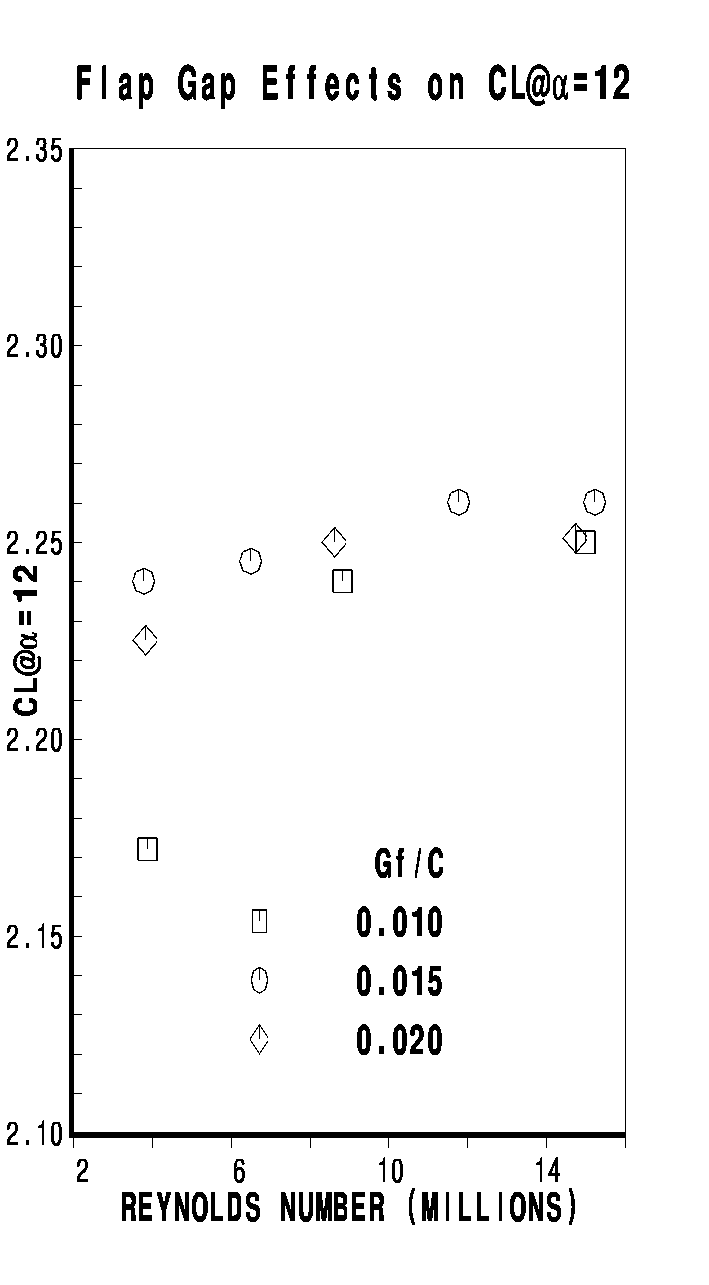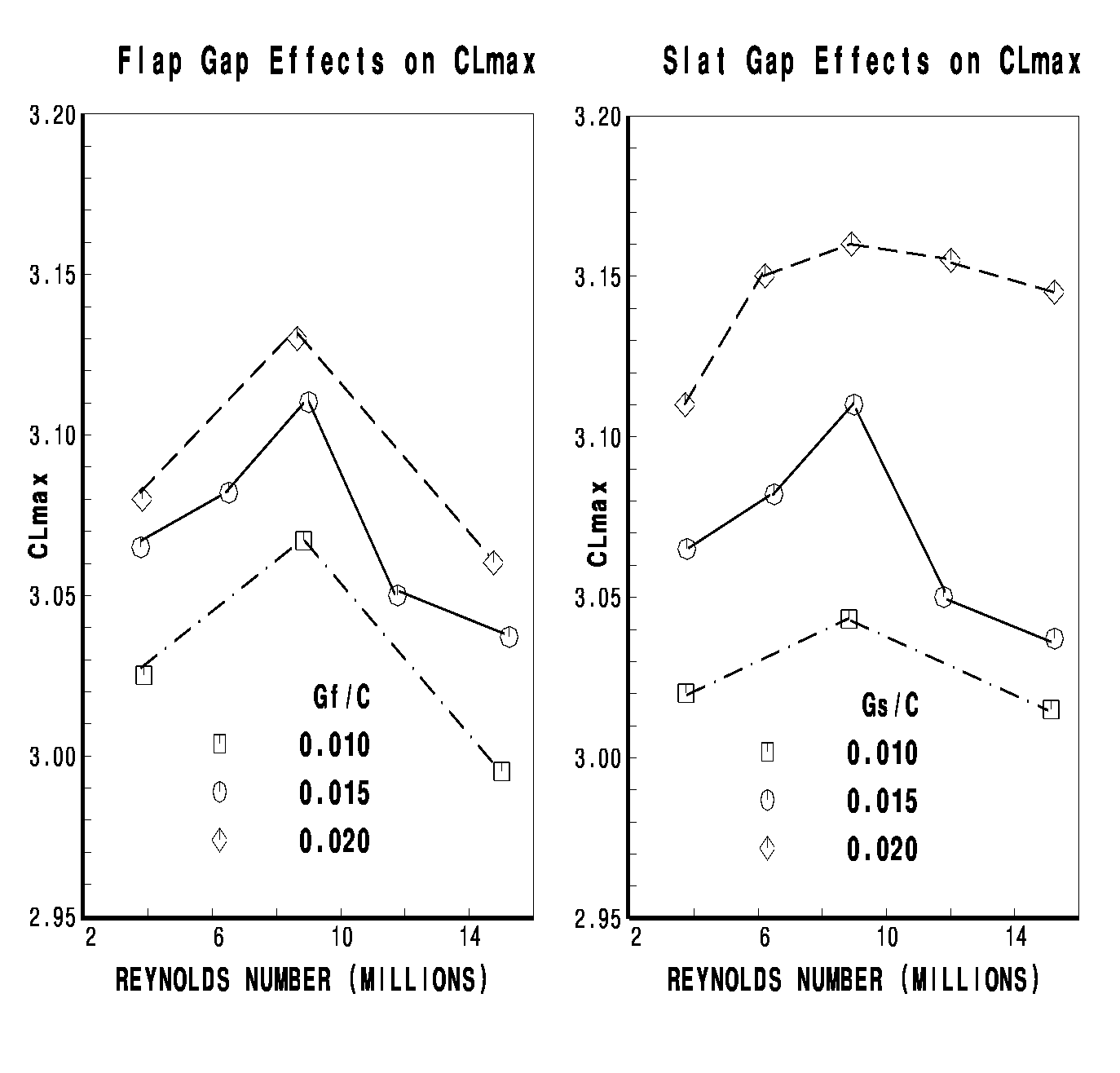
CFD Challenge – Adverse Reynolds Number Effects
Central to optimal aircraft design is the ability to predict airplane performance in flight. For the foreseeable future, high lift designers will continue to extrapolate wind tunnel results to flight conditions. Because of the large differences in Reynolds number between wind tunnel and flight (roughly a factor of 6 for a 747 model tested at the DERA 5m Pressurized Low-Speed Tunnel), accurate estimates of performance changes with increasing Reynolds number are needed.
Scale effects in high lift flows are becoming better understood. Testing of 2D models in the NASA-Langley Low Turbulence Pressure Tunnel (LTPT)and simple 3D models have shown that high lift performance can degrade with increasing Reynolds number, due to variations in wake thickness and changes in boundary layer state. Because of its Reynolds number capability, testing at the ARC12ft provided a unique opportunity to investigate scale effects on a 3D high lift configuration and acquire detailed flowfield data for code validation purposes.
Variations in CL at fixed angle of attack (a=12 degrees) for various flap gaps is shown for the full-span landing configuration in the figure below. With the exception of small flap gaps at low Reynolds number, where a merging of the wing wake with the flap boundary layer is likely, changes in lift are small.

Variation in CL|a=12 with Reynolds
number for full-span landing flaps configuration 1.
Much greater variations are seen near maximum lift conditions. CLmax variations with Reynolds number for the full-span landing flaps configuration are shown below. For all slat and flap gaps tested, CLmax increases as Rec is increased from 3.8x106 to 8.8x106. However, as Reynolds number is further increased, CLmax decreases.

Variation in CLmax with Reynolds number for full-span landing flaps
configuration 1.
The flow physics behind this ‘adverse’ Reynolds number effect appear related to the boundary layer state on the main element. TSP visualization of transition on the main element shows that near CLmax, the extent of laminar flow on the main element decreases with increasing Reynolds number. The main element boundary layer state is controlled by the boundary layer state on the attachment line (laminar or turbulent), and whether the local acceleration in the leading edge region is sufficient to relaminarize a turbulent boundary layer. Estimates of the attachment line Reynolds number RbarºVe/(ne(dUe/ds))]1/2 and the relaminarization parameter Kº (dQe/ds)(ne/Qe2) are consistent with the following scenario:
The ability to predict these ‘adverse’ Reynolds number effects near maximum lift conditions would represent a major milestone for CFD codes. Although prediction of attachment line transition, relaminarization, and retransition remains far off, predicting increments in CLmax using user-input transition locations would be a major accomplishment.
For more details on these adverse Reynolds number effects, see AIAA-2000-4217,
"Experimental Investigation of a Simplified 3D High Lift Configuration
in Support of CFD Validation", by P. L. Johnson, K. M. Jones, M. D. Madson.
return to Data Archive home page
Page Curator and NASA Official Responsible for Content
Judith A. Hannon
Last Updated
August 5, 2011